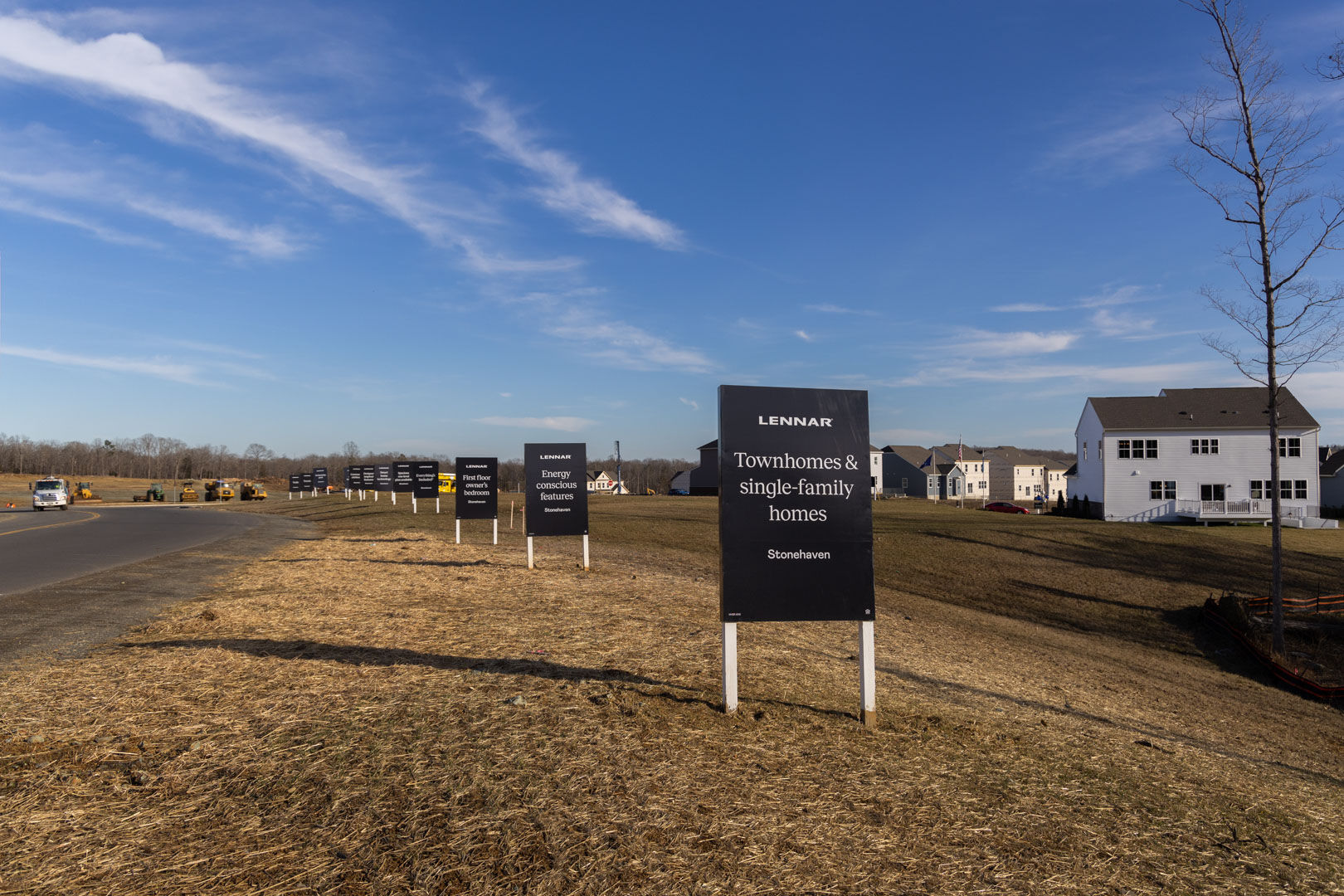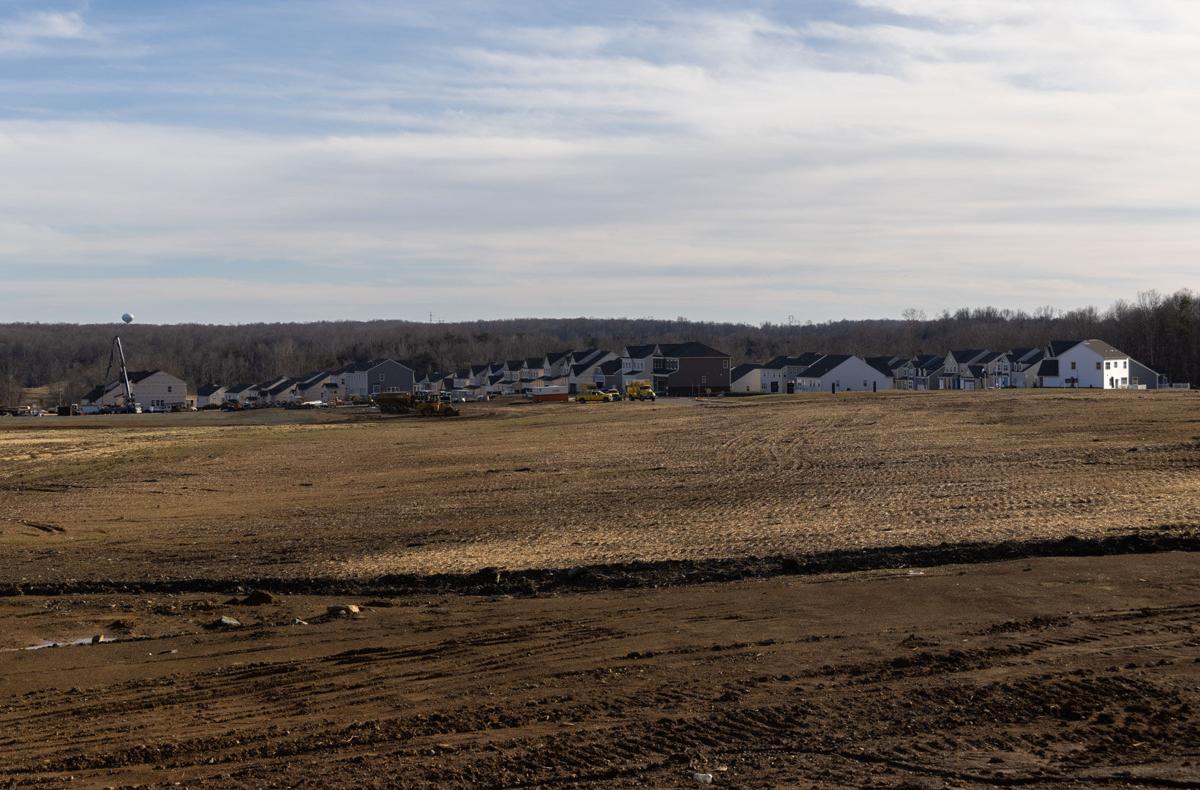Virginia needs more houses — tens of thousands of them, including as many as 300,000 affordable rental units. Zoning restraints, land-use policies and environmental regulations have been getting in the way.

Virginia Gov. Glenn Youngkin (Photo/Sarah Vogelsong/Virginia Mercury)
This is the core message in Gov. Glenn Youngkin’s initiative, “Make Virginia Home.” Unveiled late last year, it presents a problem: the state’s housing supply has been lagging population growth for almost two decades and, as a result, homes have gotten wildly more expensive in parts of Virginia. They now are out of reach for people who, for a variety of reasons (youth, age, ethnicity), find themselves on the lower rungs of the income ladder.
Youngkin has also named a significant culprit: zoning policies, land-use rules and building codes that snarl up homebuilders’ various development projects. His campaign for more housing hasn’t been translated into a specific set of proposed laws or rules, but that’s coming. And it could have far-reaching implications for Rappahannock County, which is passionately identified with protecting a landscape where cows outnumber people and where developers can expect a grim-faced reception.
PEC presses the worry button
“This could be something of great importance,” said Board of Supervisors member Van Carney, representing the county’s Stonewall-Hawthorne District. “It could be difficult to keep what we have if there’s a focus on affordable housing combined with a push for deregulation.”

Stonewall-Hawthorn District Board of Supervisors member, Van Carney. (Photo/Luke Christopher)
As Carney sees it, the Youngkin program may have broad appeal by attracting conservatives who favor deregulation, plus progressives who worry about lower-income households getting priced out of the real estate market.
The Virginia Department of Housing and Community Development is hard at work on a mix of deregulation steps and financial incentives that will push Virginia’s cities, towns and counties to encourage more new homes, particularly those that lower-income households might find affordable. The push has ignited consternation within organizations such as the Piedmont Environmental Council, whose president Chris Miller recently warned supporters of “potential loss of local control over land use decisions.”
Conservation groups were relieved that this winter’s legislative session in Richmond didn’t hatch a flurry of new laws freeing up land for new homebuilding projects. Tax cuts and abortion policies captured more attention. Some speculate that Youngkin will get drawn into national politics, including a possible run for the Republican presidential nomination, before the housing plan can gain traction. But the housing stresses he’s worried about aren’t going away, and the Youngkin initiative may bring together a coalition of advocates committed to changing the ways local governments manage lands and homes.
Virginia’s new homes fall short of population growth
Youngkin’s housing push builds on a study ordered by the Virginia General Assembly and completed last winter. Managed by the nonprofit Virginia Housing and the Virginia Department of Housing and Community Development, the study found troubling gaps in the supply of houses for Virginians. Here are some of the key findings:
-
The annual number of building permits issued in Virginia, a proxy for measuring new homes, dropped 47% from 63,215 in 2004 to 33,813 in 2020.
-
Since 2008, Virginia’s population has grown 10.2%, while housing supply has expanded only 8.7%.
-
Housing for wealthier households dominate, with detached single-family homes accounting for 67.9% of the supply, while large multi-family structures come in at 30.6%, and small multi-family structures, 1.5%.
-
Young households are losing ground: In 2010, 58% of Virginians between the ages of 25 and 44 owned their homes, but only 50% did in 2020. Sales of so-called starter homes are dropping: they represented 47% of all home sales in 2013, but 41% in 2021.
-
Between 2000 and 2019, 549,000 Virginians joined the ranks of those over the age of 55; many will seek smaller, simpler homes, which are in short supply.
-
Racial gaps in home ownership remain significant: White households in Virginia show 73% ownership, while Black households come in at 48%.
But what explains the housing shortfall?
PEC’s Miller, said in his latest letter to supporters that by blaming local planning and land-use policies for the housing shortfall, the Governor’s team is “ignoring a myriad of other factors contributing to a dearth of affordable housing options.”

Upon completion, Stonehaven at Clevenger’s Corner will be a 700-home residential development anchored on the ends of Culpeper, Fauquier and Rappahannock counties, Feb. 2023. (Photo/Luke Christopher)

Stonehaven at Clevenger’s Corner (Photo/Luke Christopher)
Others warn that a generalized encouragement of homebuilding might result in more large houses for the affluent, and a continued shortage of smaller homes for lower-income workers, young couples and retired people. In a recent nationwide study, the American Farmland Trust calculated that between 2001 and 2016, 2,000 acres of U.S. farmland and ranchland was lost each day to large-lot housing developments and what the group called “rural sprawl.”
Part of the problem is also wages that don’t keep up with living expenses. The Virginia study cited one fast-growing job category, healthcare support, which includes people who provide in-home care and staff nursing homes and rehabilitation centers. According to the findings, Virginia’s healthcare support workers brought in an average annual compensation of $28,090, below the level needed for most mortgages and many available rents.
In Rappahannock, the bulk of teachers, social workers, emergency medical staff and lower-paid employees at the Inn at Little Washington trek to work from neighboring counties, where they find more affordable housing options.
Jenny Schuetz, a senior fellow at the Brookings Institution, and author of “Fixer-Upper: How to Repair America’s Broken Housing System,” calculates that the poorest 20% of American households cannot afford market-rate housing. But proposals for less costly housing options are often shot down by various structures within the communities where the cheaper dwellings would be located. In a recent Brookings seminar, Schuetz said: “We’ve constructed a system where people who are in the community are essentially gatekeepers and get to decide who can move in after them.”
Youngkin’s balancing act
By any analysis, the Republican governor faces a tough balancing act: deregulation and business development are popular rallying cries among his supporters, but overbearing instructions from state and federal governments generally stir resentment at the local level.
One phrase in the “Make Virginia Home” explanatory literature points to the complexity that lies ahead: Amid the calls for fewer restraints and more homebuilding, the governor’s package notes that the program will “respect the property rights of Virginia’s landowners and the freedom of Virginia’s communities to decide their own futures.” How these multiple objectives balance out will be closely watched.










